This ATA device lets you connect to multiple handsets or ports and send faxes.
Let's dive into the details.
Who can use this
ATA devices can be used on any Dialpad plan.
Important Note
Poly 402 ATA devices are no longer supported. Dialpad will make a best effort to keep existing users of any Poly 402 ATAs up and running on Dialpad.
Set up process
Setting up your new ATA device with Dialpad is a 3-step process.
Provision the ATA device to Dialpad
Add the ATA device to the Dialpad Admin Portal
Activate (assign) the port for a Dialpad user or room
Provision Poly 402 ATA device to Dialpad
To provision a Poly 402 ATA device to Dialpad:
Confirm the ATA device is connected to the internet through Ethernet or WiFi
From the phone, dial ***1 to find your IP address
Enter the IP address in a new browser tab
Be sure to use HTTPS format
Navigate to System Management
Select Auto Provisioning
Navigate to ITSP Provisioning
Set the ProvisioningOption to ConfigURL
Uncheck the box beside ConfigURL
Set ConfigURL to: https://prov.dialpad.com/
The trailing terminating backslash is required
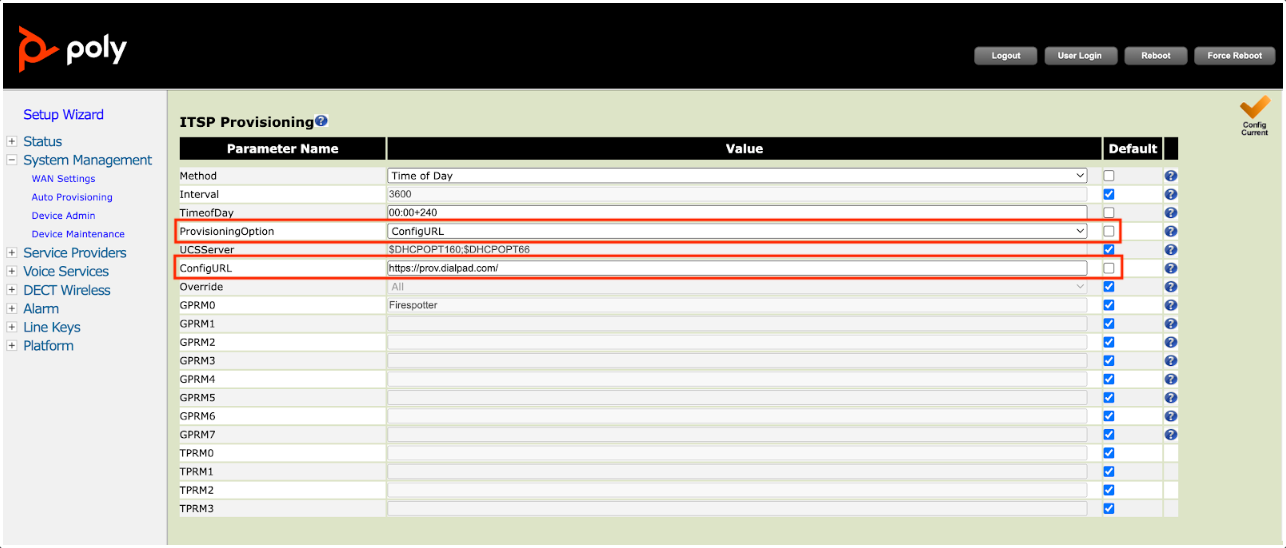
Select Submit
Reboot the device
Add the ATA to the Dialpad Admin Portal
Now that your ATA device has been provisioned to Dialpad, it's time to add it to the Dialpad Admin Portal.
To add the device, go to your Dialpad Admin Settings.
Navigate to Office
Select Office Settings
Select Desk Phones
Select the DECT/ATA Devices tab
Select Add a new DECT/ATA
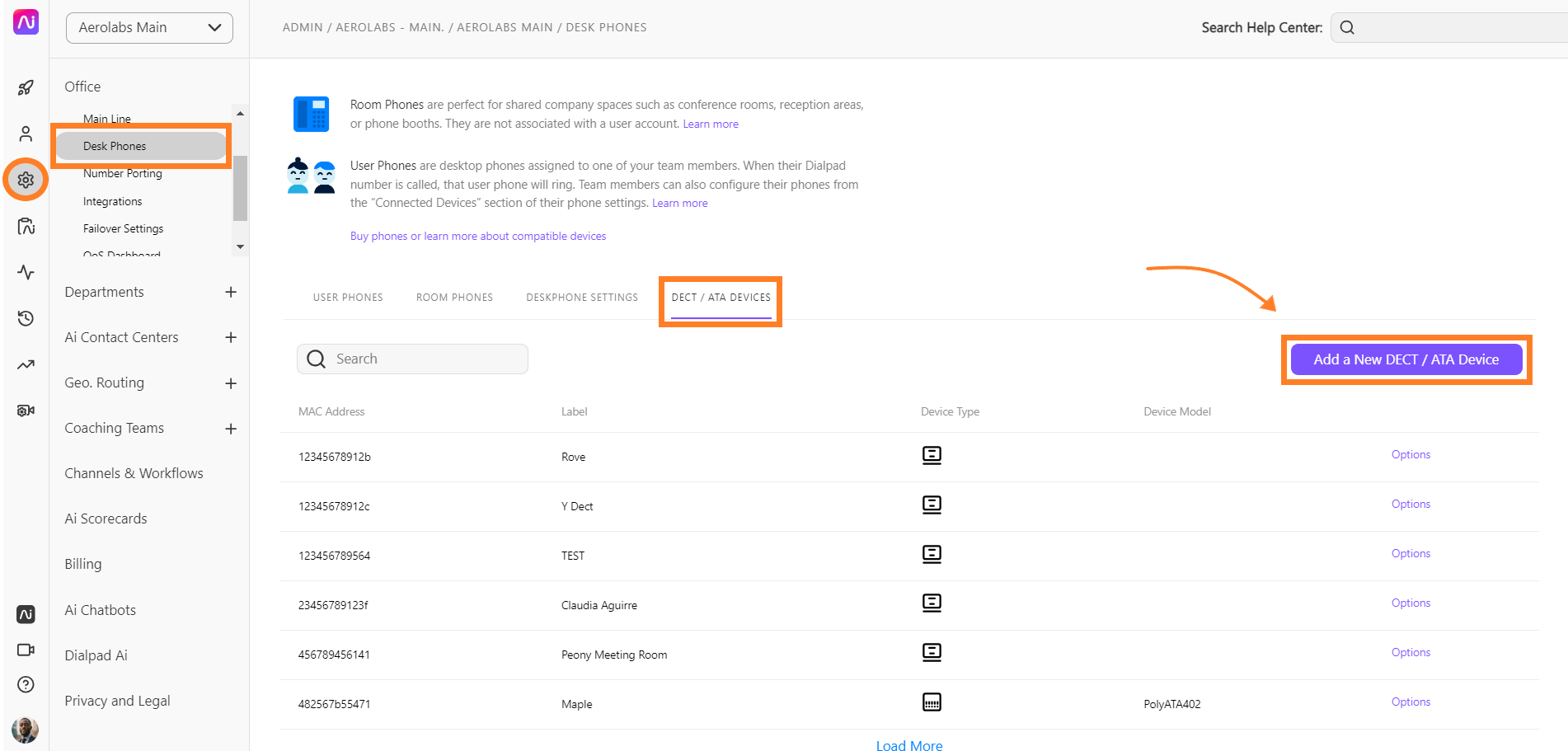
Select the Device Type
Enter the display name and the device's MAC address
Select Add new device
.png)
That's it! The device will reboot and be listed in the DECT/ADA Devices tab.
Assign the port
Now that the device is provisioned and set up for Dialpad, it's time to assign the port to a user or room.
Assign a port to a user
To assign a port to a user, head to the DECT/ATA tab from your Dialpad Admin Portal.
Select Options
Select Show managed devices
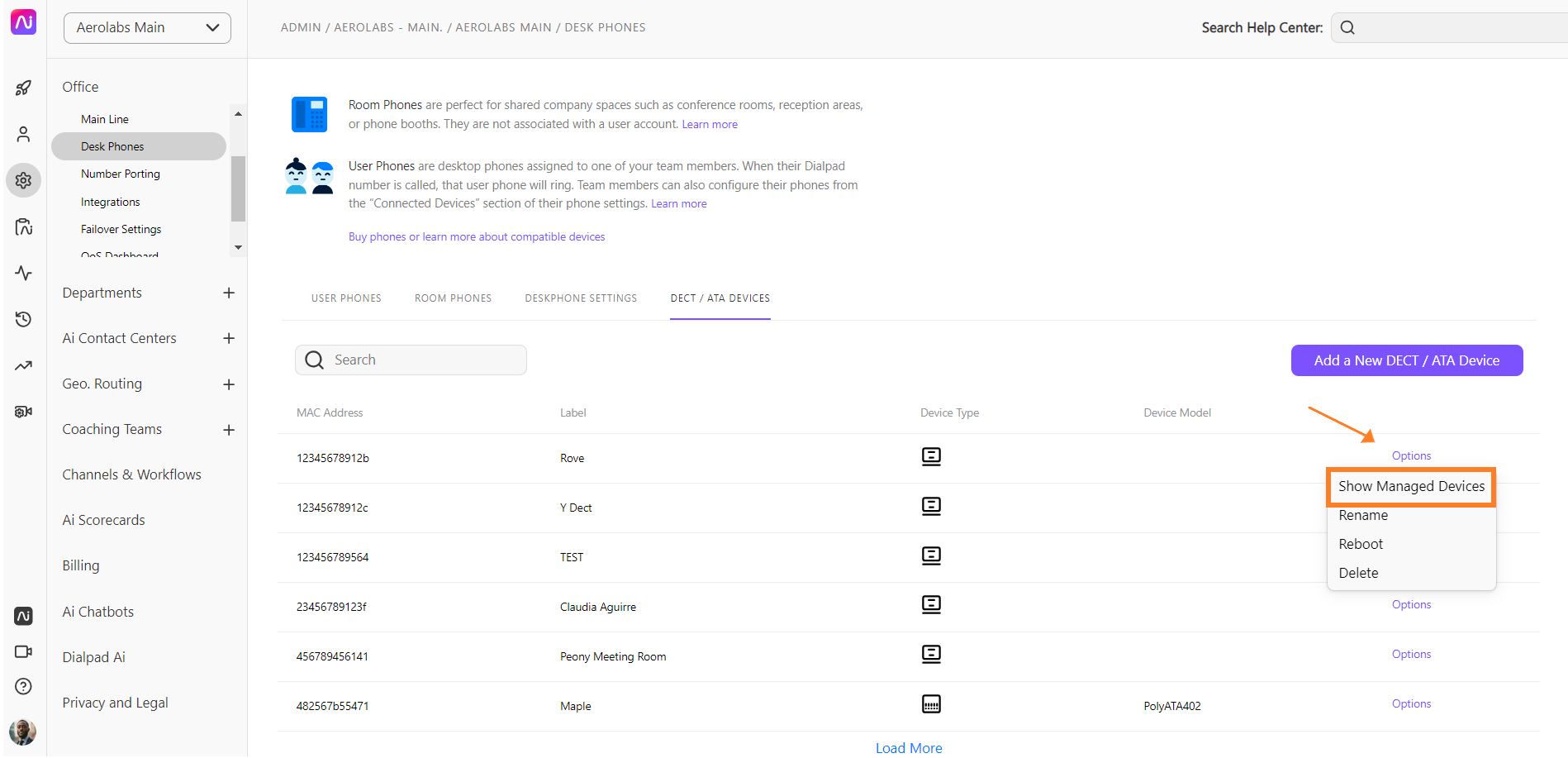
Select Assign a new device
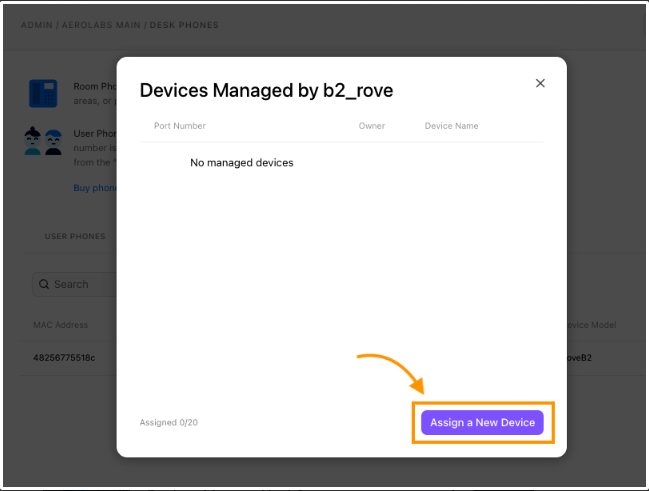
Select User
Choose the owner, add the display name and port
The port number must match the index number on the handset.
Select Assign port
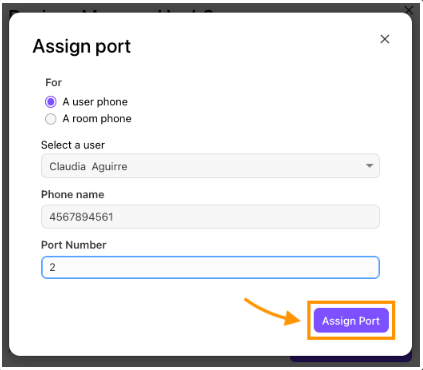
Once the port has been assigned, the base station will reboot.
Assign a port to a room
To assign a port to a room, head to the DECT/ATA tab from your Dialpad Admin Portal.
Select Options
Select Show managed devices
.png)
Select Assign a new device
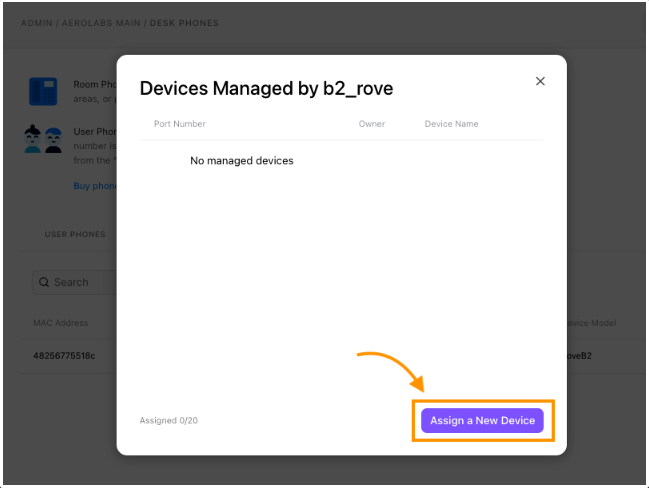
Select Room phone

Enter the room name and port number
The port number must match the index number on the handset.
Choose the number type
Local
Toll-free
Select Assign port
After assigning the port, the base station will reboot.
Note
ATA devices set as room devices can be configured for faxing.
Head to this Help Center article to learn how.
Unassign a port
To unassign a port, go to your Dialpad Admin Settings.
Navigate to Office
Select Desk Phones
Select DECT/ATA Devices
Select Options beside the device
Select Show Managed Devices
.png)
Select Options
Select Unassign
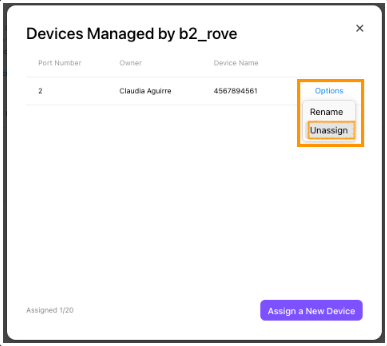
The device will reboot to apply the update.
Rename an ATA device
To rename an ATA device, go to your Dialpad Admin Settings.
Navigate to Office
Select Desk Phones
Select DECT/ATA Devices
Select Options beside the device you want to rename
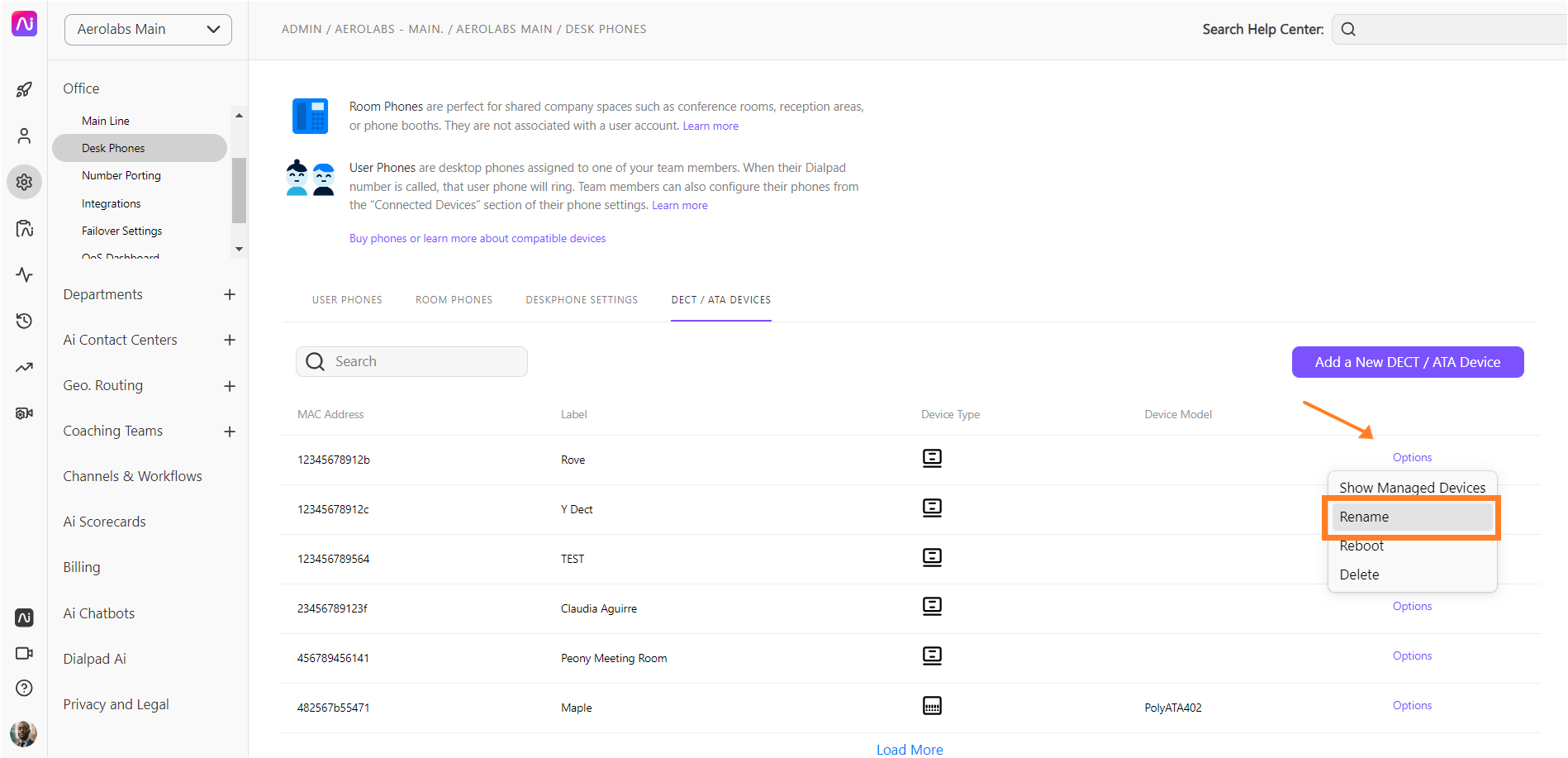
Select Rename
Enter the new display name
Select Rename
.png)
Rename a managed ATA device
To rename a managed ATA device, go to your Dialpad Admin Settings.
Navigate to Office
Select Desk Phones
Select DECT/ATA Devices
Select Options beside the device
Select Show Managed Devices
.png)
Select Options beside the device
Select Rename

Enter the new display name
Select Rename
Frequently asked questions
Why is there a pause before my ATA phone call goes through?
When you make a call with your ATA device using VoIP, there’s usually a 4-second delay after you dial a number. Since VoIP calls go over the internet, the process is more complex than with regular phone lines, which causes this delay.